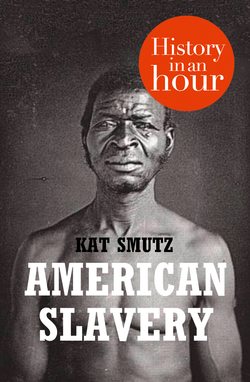Читать книгу American Slavery: History in an Hour - Kat Smutz, Kat Smutz - Страница 10
ОглавлениеNon-Existent Rights
Not all slaves sold in the slave markets came directly from Africa, and the reasons that a slave might find themselves on an auction block were as varied as the people who claimed ownership over them. Recovered fugitive slaves were often sold because of the potential for a second attempt, as owners did not want to risk losing the slave to a successful escape, or the cost of hiring slave catchers to find and return the slave. A slave might be sold as punishment for a transgression, real, imagined or overblown. Sometimes bankruptcy or the death of an owner left a slave with an unpredictable future on the auction block.
A slave holding a horn, photograph by Russell Lee
Although many owners promised their slaves freedom on the death of the owner, it was sometimes an empty promise, and in any case, in practice it was dependent upon the owner’s heirs. Some honoured the dead owner’s wishes and gave the slave their freedom. Some did not. One example was General Robert E. Lee and his wife, Mary Custis Lee. Mary’s father, George Custis, was the grandson of George Washington’s wife, Martha. Upon his death, Custis left a will that set terms under which his slaves would be freed, but before the terms were met, the American Civil War erupted. Under the circumstances, the Lees would have been justified in delaying granting freedom to the slaves. Instead, upon consulting her husband, Mary Custis Lee honoured her father’s wishes.
Franklin and Armfield Slave Prison, picture from the American Anti-Slavery Society
Some freed slaves later recounted stories of life on the auction block. Harriet Jacobs (pictured below) was a fugitive slave who wrote a narrative of her life in bondage. She told of her maternal grandmother, who was promised freedom but whose liberty was nearly lost. Molly Horniblow, referred to as ‘Aunt Marthy’ in Jacobs’ narrative, was told that, although her mistress had granted her freedom in her will, she would be sold to reconcile debts against the estate. The slave woman was well known and well liked within the community and her owner’s neighbours rallied and refused to bid on Aunt Marthy when she was put on the auction block. Her mistress’ sister bid $50 for Aunt Marthy, and no one offered a dollar more. She honoured her sister’s wishes and saw to it that Aunt Marthy was freed.
Harriet Jacobs
For a time, African slaves were in a state of limbo, their rights unclear. The first twenty who arrived at Jamestown were treated as indentured servants, and it was not until 1664, when the colony of Maryland’s general assembly declared that all African slaves were permanent indentures for life, that their status as slaves became clear. The legislation included any women, even white women, who married slaves. They, and any children of the union, became the property of their husband’s master. The only exception was the children of white women who had married before the act was passed. Such children were to be freed when they reached the age of thirty.
In general, treatment of slaves and their legal rights was almost entirely dependent upon their owners. In other words, slaves had only the rights their owners granted them. When it came to the law itself, most were designed to be of benefit to slave owners. Slaves were seen as property rather than people, things of value. If a slave was injured or killed by someone other than the owner, the penalty was usually restitution for damages. If a slave raised his or her hand against a white person, the penalty was usually death. A Virginia law passed in 1705 gave slaveholders the right to bequeath ownership of slaves to their heirs. The same law gave an owner the right to ‘kill and destroy’ a slave who tried to run away. Fugitive slaves who were recovered might be sold, whipped, or fitted with punishment devices such as bells or collars that made subsequent attempts to escape nearly impossible.
Jack, a slave on a South Carolina plantation. Photograph by Joseph T. Zealy
Where a slave was taken also affected the life he or she led. The majority of African slaves in the colonies were in the South, working in agricultural jobs. Their working week might be as much as six days and last from sunrise to sunset. Those fortunate enough to have skills worked at the trade they had learnt. This was especially true in the North where slaves worked in warehouses, shipyards, and any number of other places. But the economy in the North was far less dependent upon slavery than the agrarian South and the number of slaves in the North was far lower.
It was not unusual for the skills of a slave to be ‘hired out’ to those who did not own their own slave or who needed a specific set of skills for a particular job. Arrangements for payment varied. Sometimes the pay was given to the slave to keep and many earned enough to buy freedom for their families. Some shared what they earned with their owners, but in some cases, the owner took everything. Some slaves had agreements in which they paid their owner a fee for the privilege of hiring out. The practice benefited the slave in that he or she might make enough to buy their freedom. It was of benefit to the owner in that the slave or the person he hired out to was responsible for feeding, clothing and sheltering the slave.
